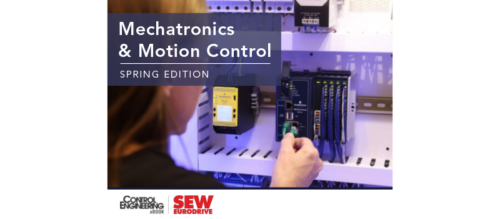Sensorless vector control boosts stepper motion performance
Agile Systems’ SilentStep system works with 2-phase bipolar step motors, using either three half-bridge or two full-bridge drive circuits. Three half bridges (shown) reduce the number of power switches and associated driver and control circuits from eight to six.
Stepper-motor-based systems offer simple, low-cost motion control and about twice the low-speed torque production of an equivalent-size brushless servo motor system. However, stepper systems’ unique ability to control motion in open loop makes them prone to stall under load, substantially reducing usable torque in real applications. Stepper motors under conventional control also generate audible noise and resonance. A patent-pending closed-loop, sensorless flux-vector control method called SilentStep Technology—recently introduced by Agile Systems Inc .—promises to overcome these issues.
Key to SilentStep Technology is operation of the stepper motor in closed-position loop without position sensors. The controller derives position feedback information from back-EMF (electromotive force) and phase-current sampling of the motor, according to Agile Systems. “It boosts stepper-motor performance into the range of servo motor performance while maintaining the inherent simplicity of the conventional stepper motor drive system,” says Rich Dirker, applications engineering manager.
This contrasts with the conventional approach that selects a larger-than-necessary stepper motor (ideally with 50% torque margin) to avoid stall conditions “with an adequate degree of certainty,” he explains. Also, some stepper motion systems add a feedback device to the motor to improve performance. Such a closed-loop approach comes at increased system cost and complexity.
With SilentStep, the motor starts under conventional microstepping and runs up to “threshold speed”—typically about 50-100 rpm, notes Dirker—at which point back-EMF voltage reaches a measurable level. Note that back-EMF magnitude is proportional to motor speed. SilentStep’s drive then switches to closed-loop operation. “[This point is] much below where audible noise and resonance effects become a problem,” continues Dirker.
Vector control, magnetic-field optimization SilentStep controller requires bipolar stepper motors with either twin full-bridge drive circuits or three half bridges. It’s not applicable to unipolar motors. Moreover, the same power drive circuits can be used as for brushless dc or ac induction motors.
Rotor position information derived from motor current and voltage sampling permits implementation of a flux-vector commutation method that reportedly overcomes audible noise and resonance found in conventional open-loop operation of stepper motors. When driving the motor with three half bridges, voltage available to each phase is effectively half compared to using two full bridges—resulting in lower usable motor speeds with the same power supply. “However, the flux-vector control method allows magnetic field (MF) optimization control to compensate for the voltage loss and extend the motor’s speed range,” adds Dirker. MF optimization further allows available motor speed to increase 100% above the back-EMF voltage-imposed limit. MF optimization can be used as well with full bridge circuits and step motors with more than two phases.
SilentStep’s controller generates a position resolution of about 4 deg electrical, yielding an equivalent resolution of 0.08 deg mechanical, with a 50-pole stepper motor, says the company. However, the technology works with any number of magnetic motor poles.
Frank J. Bartos, executive editor, Control Engineering, fbartos@reedbusiness.com
Do you have experience and expertise with the topics mentioned in this content? You should consider contributing to our CFE Media editorial team and getting the recognition you and your company deserve. Click here to start this process.


